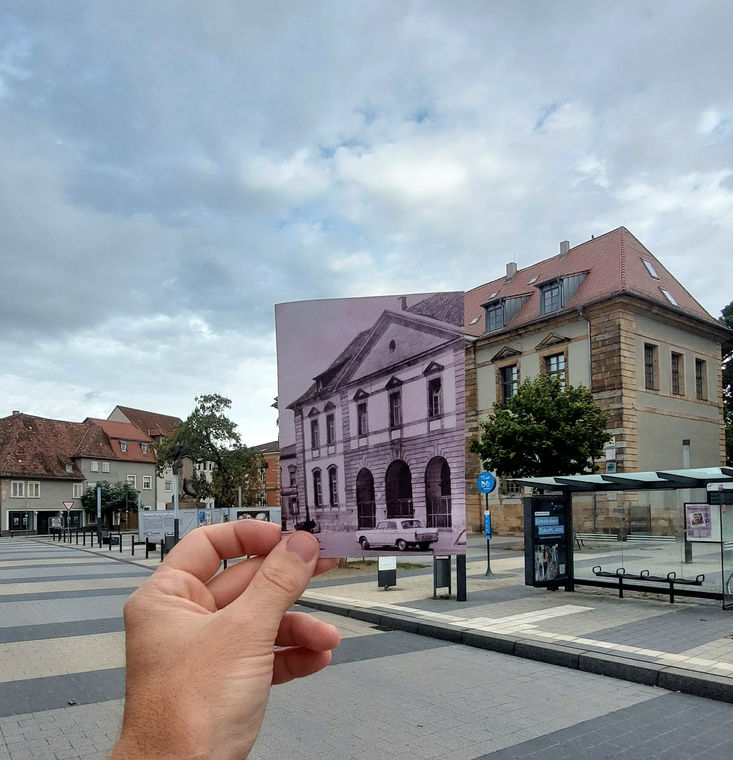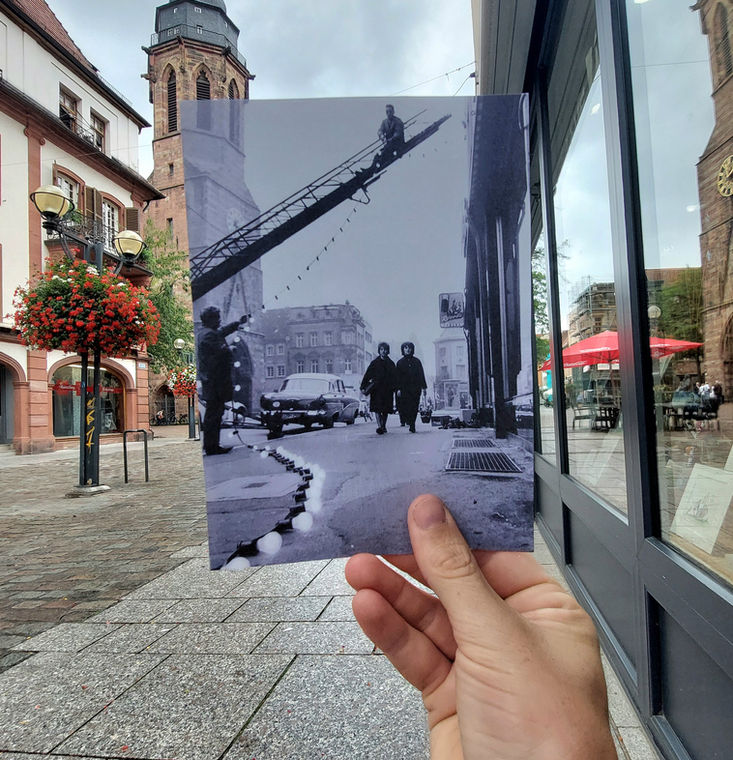Landau in der Pfalz
A Look into the Past was also carried out in the city of Landau in der Pfalz, Germany, in 2024. This international version kept the essence of the original project developed in Uruguay: to rescue the urban visual memory by comparing old photographs in their current environment.
The project was carried out in collaboration with the Landau Regional Museum and Archive, who provided the valuable historical photographic material and actively participated in the selection of the images used. The route was designed symbolically and chronologically, starting at the German Gate (Deutsches Tor) and proceeding along the main street (Marktstraße) to the French Gate (Französisches Tor). This route not only allows you to observe the physical changes in the city, but also to visually and emotionally retrace its rich and complex history.
Along the way, landmarks were portrayed that reflect the various stages of Landau's transformation: from its role as a fortified city, through the European wars, to its development as a cultural, commercial and university centre today.
Brief historical context of Landau
The town of Landau in der Pfalz was first mentioned in historical documents in 1106 and was granted the status of a free imperial town in 1291 by Emperor Rudolf I of Habsburg. This meant that Landau answered directly to the Holy Roman Emperor, which gave it political, economic and judicial privileges. During the Middle Ages, Landau established itself as a regional trading centre, with an economy based on agriculture, wine trade and handicrafts, growing around its walled core.
Due to its strategic position in the Pfalz region (Rhenish Palatinate), Landau was disputed by European powers on several occasions. In 1680, it fell under French rule and was fortified by order of King Louis XIV, following the plans of the renowned military engineer Sébastien Le Prestre de Vauban, who turned it into a real fortress town. Walls, bastions and gates were built, which redefined its urban layout.
During the War of the Spanish Succession (1701-1714), Landau was besieged several times and became an important military point in the confrontation between the forces of France and the alliance of the Austrian Empire, Great Britain and the Netherlands. The city was taken and retaken on multiple occasions, causing severe damage to its urban structure and a profound impact on its population.
With the fall of the Napoleonic Empire and the new territorial order after the Congress of Vienna (1815), Landau became part of the Kingdom of Bavaria. From then on, a process of demilitarisation and urban modernisation began. Many of the fortifications were demolished to allow for the expansion of the town into an administrative, commercial and cultural centre. The arrival of the railway in 1855 further boosted its growth and connectivity.
During the First and Second World Wars, Landau suffered the effects of military occupation, bombing and a deteriorating economy. Although the city was not completely destroyed, it did experience significant material and social losses. However, it managed to preserve much of its historic centre, including civilian and religious buildings and some defensive structures. After the war, Landau was part of the French occupation zone and was part of the reconstruction process that marked post-war Germany.
Today, Landau is a university, cultural and wine-growing town. It preserves an important architectural and historical legacy, visible in its old town centre, its squares and streets, and its two historical gates: the German Gate (Deutsches Tor) and the French Gate (Französisches Tor), which symbolically mark its past divided between cultural and military influences.
This historical context makes Landau an ideal setting for the project A glimpse into the past, where history is not only seen in books, but experienced by walking its streets. The visual proposal invites us to rediscover this memory through a symbolic journey between its two gates, tracing its evolution from a fortified city to a contemporary cultural centre.

























